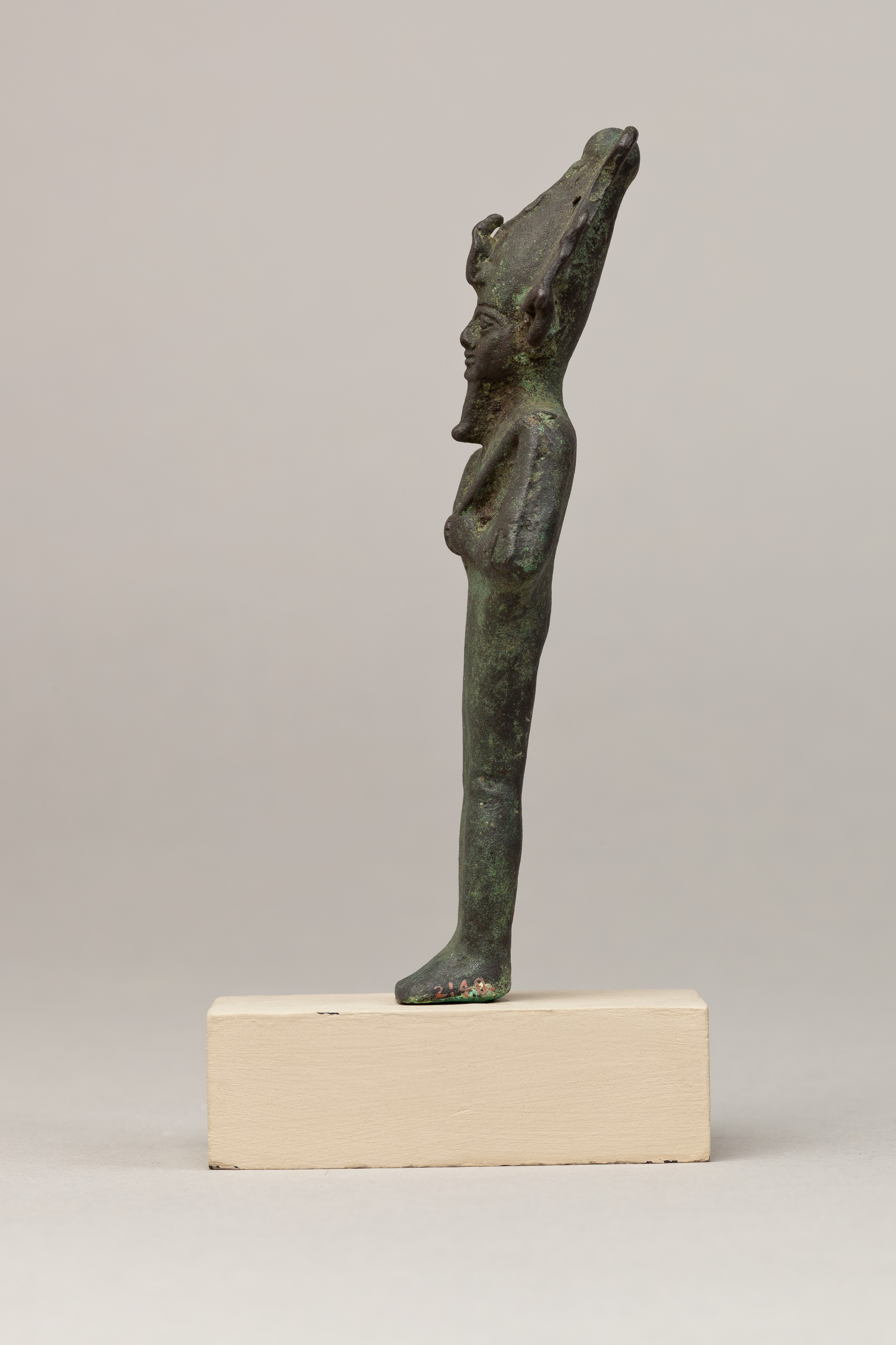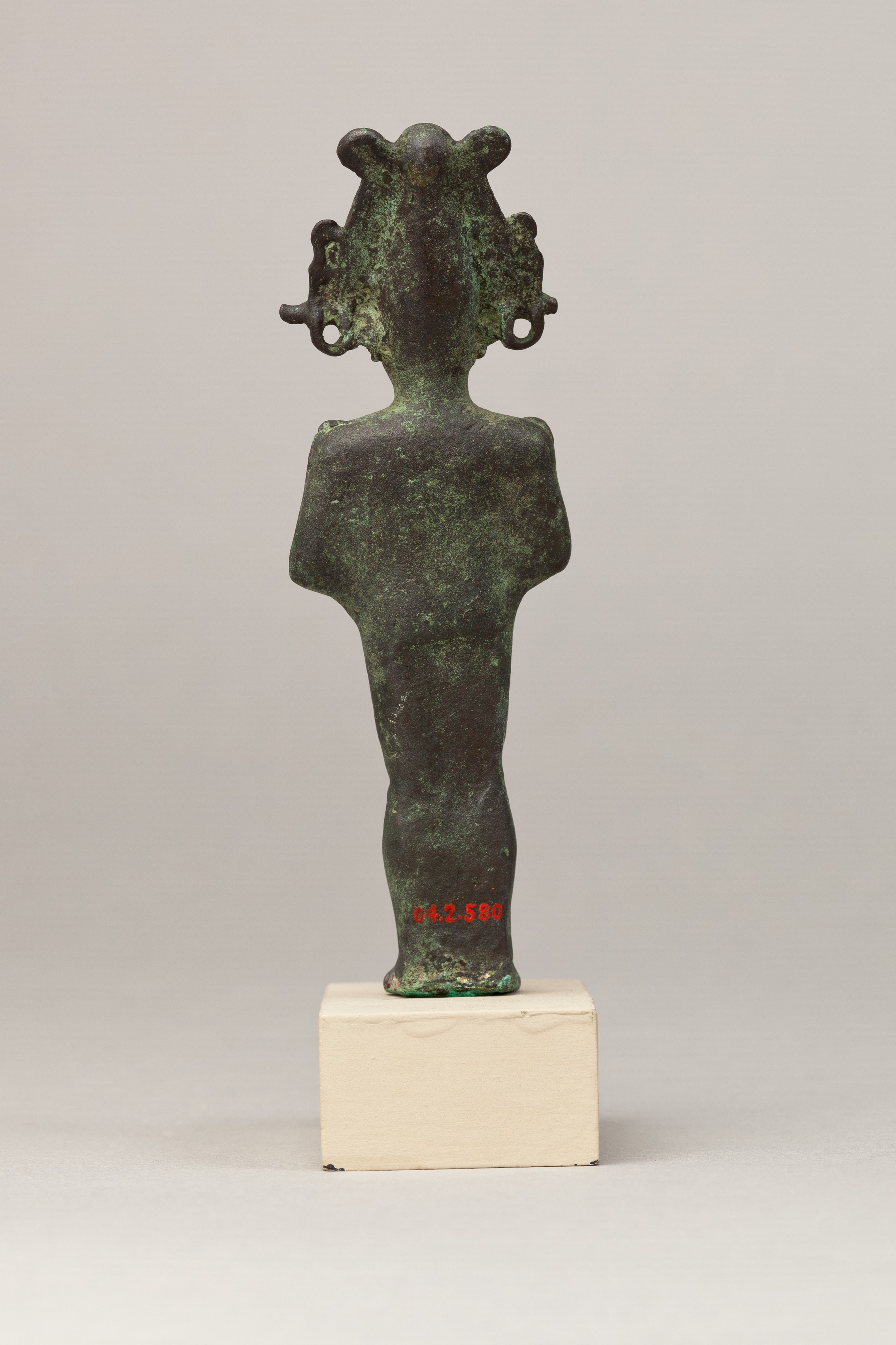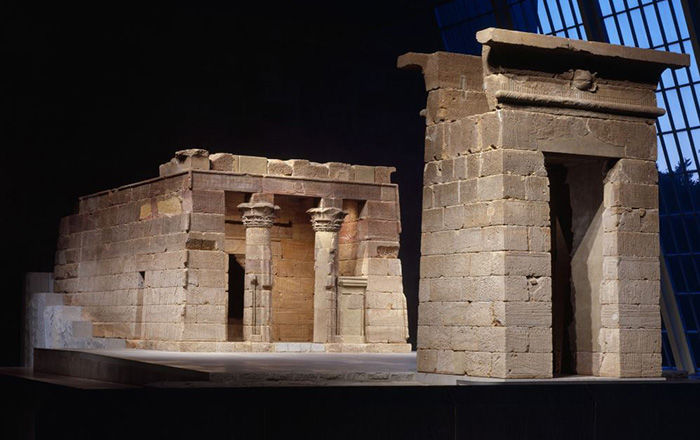Osiris
Late Period–Ptolemaic Period
Osiris, foremost of the Egyptian funerary gods and ruler of the underworld, stands upright and wears one of the most elaborate versions of his atef crown, complete with a uraeus on either side of the feathers and ram horns. Beneath the ram horns on each side are two small loops, from which would have swung a pair of separately cast uraei on each side. He is dressed in a close-fitting mummiform garment that conforms to his arms and shoulders. He holds the royal crook and flail with his hands poised symmetrically with the fists touching. Osiris holds the crook in his right hand and the flail in the left, which is the reverse of the usual arrangement, although this arrangement is occasionally attested on other statuettes as well.
Osiris statuettes such as this one were some of the most abundant temple offerings in Egypt by the first millennium B.C., reflecting both the god’s importance and changing cult practices that spurred the wide-scale dedication of deity statuettes. Many statues of Osiris were offered in temples and shrines belonging to him, but they have also been found in other contexts, for example near temples and shrines honoring other prominent deities or in animal necropoleis.
This image cannot be enlarged, viewed at full screen, or downloaded.
This artwork is meant to be viewed from right to left. Scroll left to view more.





